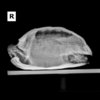M
Maggie Cummings
Guest
IMO aquariums are fine to raise small tort. The air is fine, but you must soak regularly as you put an animal on slow cook in a tank. But I have raised many babies in tanks, just be sure to soak, and keep up the humidity. I think a 40 gallon is too small for 2 redfoots. After using tanks for years, I found that homemade wooden tort tables make for happier animals. I have several tort tables now, one has 3 T. ornata and they are very different in a table as opposed to a tank. But I also used 100 and 250 gallon tanks, not small ones...are you saying your tanks are completely covered???Hi all! Ive changed my setup and started using aquariums instead of the low bins ive had before
Ive been able to keep the necessary temps inside and the humidity, but Im a bit concerned about air circulation.
I have 2 tanks, 1 20 gallon for a sulcata hatchling, and 1 40 gallon for 2 rfs. having a closed chamber makes it so much easier to achieve the necessary temps, however, the only time I open the enclosures are when its getting cleaned/ theyre getting fed (lasts roughly 5-10 mins max)
Is this enough time for proper airflow/ circulation inside? Or is it essential to have little holes on the side for regular airflow?
Thanks!
Do you ever have anything to do with them besides the 5 to 10 minutes of cleaning? Do you hold them, take them places and socialize the? I do and it makes for exceptional tortoises....
Last edited by a moderator:


